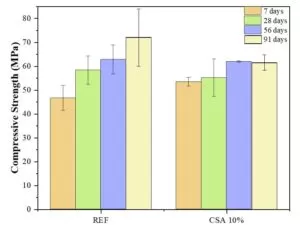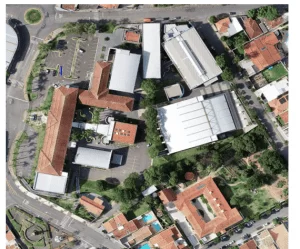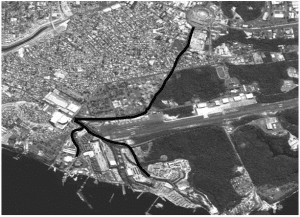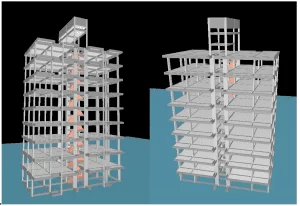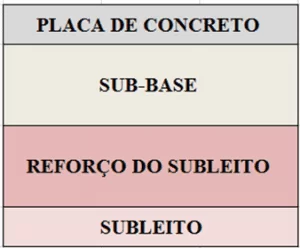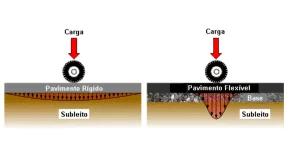ORIGINAL ARTICLE
SALES, Marcus Vinicius Ribeiro [1], BARROS, Jefferson Alves [2], SOUZA, Fernando Henrique Fernandes [3]
SALES, Marcus Vinicius Ribeiro. BARROS, Jefferson Alves. SOUZA, Fernando Henrique Fernandes. Asphalt pathologies due to network replacement works in Gurupi-TO. Revista Científica Multidisciplinar Núcleo do Conhecimento. Year 05, Ed. 10, Vol. 12, pp. 65-83. October 2020. ISSN: 2448-0959, Access link: https://www.nucleodoconhecimento.com.br/civil-engineering/asphalt-pathologies
ABSTRACT
In the reality of our country, it is increasingly common to come across precarious situations that cause inconvenience to users on the streets, as well as on highways and avenues. The assessment of the proper quality of pavements is related to a set of activities that must be carried out. Designating the properties and qualities of pavement waste. The methodology was based on bibliographic references on the subject to obtain a theoretical basis and through visits and records of information collected along the avenue. Data collection was carried out in the field, along a route of approximately 1500 meters on Avenida Maranhão between 12th and 20th streets in the city center of Gurupi – TO, where there are several asphalt pathologies on the sewage and supply network. Based on the data collected and with the help of an engineer who works in the area, it was possible to gather the complementary and necessary information to identify the various pathologies found in the place. Many of the defects found indicate that the causes are mainly associated with the execution processes and involve the incorrect use of materials and also the lack of investment to make a durable and good quality pavement in which it should offer comfort to drivers who circulate on this road. avenue.
Keywords: Pathologies, asphalt, avenue.
1. INTRODUCTION
According to Aguiar (2012), the pavement is a structure designed to resist the actions of loads and also provide a better condition for vehicles to circulate. This should offer comfort and safety to its users, however it has been increasingly common in the streets and avenues of cities to come across pathologies on the asphalt, so at any time you can be subject to falling into some hole, or something atypical.
According to Caldeira et al. (2018), these pathologies can be defined as any type of imperfection in the pavement structure, that is, anything that differs from what was initially planned. And bringing this concept of pathologies to asphalt paving, it can be observed that most of the causes of these pathologies are directly associated with excessive loads, inefficient drainage, poor execution of the pavement foundation and also due to natural wear in the long term.
Pickett (2004) states that it is necessary to understand the environmental impacts before the rehabilitation measures are taken, in order to avoid problems later on. Based on these aspects, a process for the resolution of damages through the creation and repair of asphalt pavements is elaborated.
To assess the proper quality of a pavement, it is necessary to observe the activities that were carried out jointly, that is, to observe both the materials and the way in which these materials were used. Therefore, it is correct to say that aggregates without good mechanical properties can pose a risk and in such a way compromise the quality of the pavement.
Bernucci (2008) points out that the shape of the aggregate particles can directly influence both the workability and the resistance against shear forces of the asphalt mixtures and can also change the mechanical energy necessary for good compaction in order to improve the density of a given pavement. . Therefore, the best geometry to be used in asphalt is the cubic shape and not the lamellar shape.
Bernucci (2008) also states that possible defects on the pavement surface can appear early in both the medium and long term. This is due to errors and inadequacies, such as design errors, errors or inadequacies both in the selection and in the dosage or even in the production of materials. He also highlights that these errors lead to a reduction in the life of the project.
In view of this exposure, this work aims to identify the main pathologies present in the pavement of Avenida Maranhão after the completion of the maintenance and installation of the supply and sewage networks in the city, respectively. And also present possible procedures for the purpose of correction and even prevention of the problems presented.
2. LITERATURE REVIEW
According to Bernucci (2008), the pavement is a structure in which it has several layers whose thicknesses are finite, overlapping and which are built on the subgrade, that is, they are intended to resist the efforts arising from vehicular traffic and also from climatic actions.
The classification of pavements can be represented in three different classes, they are flexible, rigid and semi-rigid pavements. Regarding flexible pavements, the DER/SP-PRO (2006) says that it is constituted by an asphalt coating on the base layer of the stabilized soil and that the layers that constitute this structure have the function of absorbing the efforts coming from the traffic of vehicles. vehicles.
Bernucci et al. (2010) also state that rigid pavements are those whose coating is made up of Portland cement concrete slabs, that is, these coatings have a very high rigidity compared to the other layers and also have a fixed thickness depending on the resistance to corrosion. bending of these plates.
The pavement layers receive the following classifications as can be seen in Figure 1.
Figure 1 – Layers of rigid and flexible pavements.

As can be seen earlier in Figure 1, the pavement layers are divided into cladding, base, sub-base, subgrade reinforcement and subgrade. The definitions of each of these layers are described below.
Balbo (2016) says that the floor covering has the function of receiving static or dynamic loads, without undergoing major elastic changes, disaggregation of components or loss of compaction. Therefore, it needs to be composed of well-agglomerated materials and arranged in a way to avoid their horizontal movement.
As for the classification of asphalt coatings, Balbo (2016) also states that they are often divided into two or more layers due to construction procedures and costs. Among these layers, he specifies the bearing layer, bonding layer, leveling layer and reinforcement layer.
As for the pavement bases and sub-bases, Balbo (2016) states that due to the need to relieve pressure on the lower soil layers, the base and sub-base layers appear, which can also play an important role in sub-base drainage. the surface of the floors. And he emphasizes that the function of the base is to distribute the efforts to lower layers.
Following the other layers, there is the reinforcement of the subgrade and the subgrade. Balbo (2016) admits that one should think about running on the subgrade, since it presents a small resistance to the vertical efforts that would occur on its surface, reflecting the best way to assign reinforcement on the surface layer so that the underlying foundation experiences less pressure in compatibility with its strength.
And as for the subgrade, Balbo (2016, p.37) says that the forces superimposed on its surfaces will be relieved in its depth, so there should be greater concern with its upper strata, which require more intense efforts. The subgrade will be composed of “consolidated and compacted natural material (in the case of cutting the body of the road) or of transported and compacted material, which is in the case of landfills”.
As for the pathologies, the DNIT (2003) classifies the possible failures in the pavement over the sewage networks, as failures of functional performance and structural performance. The first one comes from the poor ability to satisfy its main function, that is, not to meet the terms of bearing quality. The second, in question, refers to its structural integrity without showing significant flaws in its layers. This is largely related to the cracks, deformations and disaggregations of the pavement.
According to Prestes (2001) these classifications comprise a set of activities aimed at obtaining data, information and parameters that allow diagnosing problems and interpreting the performance presented by the pavement, so that it can detect its current and future maintenance needs.
Due to these, several variations of cases of pathologies arise and the need to carry out maintenance consistent with the degree of instability of the pavement, that is, they end up generating new expenses and also more inconvenience due to the road recovery works.
According to Guilherme et al. (2017) when it comes to the users’ point of view, the functional functions of the pavement are the most important, as defects in the pavement surface directly affect comfort and safety, in addition to operating costs.
3. CASE STUDY
The repaving along Avenida Maranhão between 12th and 20th streets due to the works to replace the city’s supply and sewage company networks, under urban roads, has caused constant problems in the pavement due to poor execution. These have generated great discomfort and insecurity for road users. Therefore, the main causes and, consequently, the solutions for the pathological manifestations found along the way will be presented.
The route used to study and analyze the pathologies can be seen below in Figure 2.
Figure 2 – Section of Avenida Maranhão studied.

Based on studies of theoretical references and photographs obtained on site, it was possible to observe the proportion of these defects in order to present preventive and corrective solutions.
Preventive solutions are related to how the service should be performed in order to avoid future appearances of the pathological manifestations found. And the corrective solution is how to fix existing problems.
The work also reports on the importance of controlling the degree of compaction of materials, the use of suitable materials, qualified labor and specific equipment for such services in order to obtain a good performance of the resurfacing.
3.1 PATHOLOGIES IN FLEXIBLE AND SEMIRIGID FLOORS
The pathologies found in the pavement are:
- Slits;
- Deterioration;
- Corrugations or transverse undulations;
- Exudation;
- Wear or disaggregation;
- Holes or “panelas“.
3.1.1 SLITS
In the DNIT 005/2003 – TER standard, cracks are defined as any discontinuity on the pavement surface that leads to smaller or larger openings. These can take the form of cracks, as well as isolated longitudinal or transverse cracks and interconnected cracks such as alligator leather or block type. These slits can be classified into FC-1, FC-2 and FC-3. In addition, FC-3 cracks present erosion at the edges (BRASIL, 2003).
The cracks found on the asphalt pavement of Avenida Maranhão can be seen at different scales along its entire length, many of which are exposed over patches from previous repairs.
These pathological manifestations found at the site can be seen below in Figure 3.
Figure 3 – Cracks over patches on the avenue.

3.1.2 DETERIORATIONS
According to Novo Asfalto et al. (2017), sag is a permanent deformation with a depression in the surface of the pavement, which is most often accompanied by subsidence, this can be in the form of plastic subsidence or consolidation subsidence. The occurrence of the first case is due to the plastic influence of the pavement or subgrade layer(s), while the second is caused by the differential consolidation of these layers. Thus, the deterioration are classified into two types: the local deterioration (dimensions less than 6 m) and wheel track deterioration (continuous extensions and greater than the previous one).
As shown in Figure 4 below, the presence of various forms of deteriorations can be observed along the length of the road. In figure 4 (a) this type of pathology can be seen in a strip of asphalt over mesh and in figure 4 (b), the sinking caused due to plastic influence on the pavement is illustrated.
Figure 4 – Deteriorations

3.1.3 CORRUGATIONS OR TRANSVERSE UNDULATIONS
The DNIT (2005, p.381) defines these pathologies as deformation characterized by undulations or transverse corrugations of a plastic and permanent nature on the surface of the pavement. It specifies that the probable causes of these undulations or corrugations in the pavement are due to the “instability of the bituminous mixture of the coating layer and/or the base of a pavement; Excess moisture from the underlying layers; Contamination of the asphalt mixture by foreign materials; Water retention in the asphalt mix”.
These undulations described above were found over the entire analyzed path. In Figure 5, just below, a case of undulation found at the site is portrayed.
Figure 5 – Ripples on the road.

3.1.4 EXUDATION
The main cause of asphalt exudation is the excess of bituminous material used in the pavement execution process. Normally when the temperature is high, the asphalt tends to dilate and these binders are directed to the surface of the pavement, due to the difficulty of occupying the empty spaces in the pavement or because they are in excess.
In some ways these pathologies were not presented in a significant way, however, even so, it is still a problem in question. This pathology can be seen in Figure 6.
Figure 6 – Exudation points on the pavement.

3.1.5 WEAR OR DISAGGREGATION
Wear is the process in which it is characterized by the progressive pulling out of the aggregates present in the pavement, thus causing roughness on the surface of the coating. This loss of aggregates is due to tangential stresses to the pavement.
The main causes of this pathology are related to failure of adhesion between the binder and the aggregate, presence of water and overlapping of voids on the asphalt layer, executive problems and also in the design of the mixtures that will be used.
Wear has also been constantly present on the track. In some cases, they are quite critical from a functional and structural point of view on the pavement. This case can be seen in Figure 7 (a), in which a situation in a critical state is exposed, and in Figure 7 (b), in which the disaggregation of the pavement particles occurs over the supply network.
Figure 7 – Disaggregation

3.1.6 HOLES OR “PANELAS“
The holes, also called “panelas“, receive the following definition:
Os buracos ou panelas são rupturas estruturais localizadas, que está mais enfraquecida do que o seu entorno. Não sendo reparados, rapidamente conduzirão à decomposição dos trechos adjacentes, vindo a comprometer ainda mais seriamente a rodovia (DNIT, 2005, p.321).
Its probable causes are due to excessive loads on the pavement, deficiency in the preparation and execution of the pavement, and the action of water due to infiltration.
Perhaps this is one of the most common problems on all roads in the country, due to the lack of road maintenance. Although, in some sections, it was not so visible, there were some indications of possible emergence of these pathologies on the asphalt coating. This pathology can be seen in Figure 8.
Figure 8 – Holes in the pavement.

3.1.7 PATCHES
Patches are not properly a defect, as they are a procedure to correct holes or other types of depressions in the pavement, however, when not performed properly, they can cause pathologies on a larger scale and also discomfort to road users.
In short, it is defined as:
Revestimento onde o material original foi removido e substituído por outro material (similar ou diferente). Remendos existentes são em geral considerados falhas, já que refletem o mau comportamento da estrutura original, gerando normalmente incremento na irregularidade longitudinal (DNIT, 2005, p. 385).
The main causes that deteriorate the patch are heavy vehicle traffic on site, use of poor quality materials, poor execution and also due to the actions of the environment. The deterioration of patches can be described as a set of damages that already exist, that is, due to the fragility that exists in the place.
Along the way, several situations were seen of the use of the patch as a corrective solution, however applied improperly on the pavement. These cases can be seen in Figure 9 below.
Figure 9 – Patches.

Figure 9 (a) and (b) show some patches on the road. While in figure 9 (c) and (d), they show the most critical place of the entire studied extension, in which several critical points of patches and other pathologies previously discussed and a measurement of the layer used can be observed, respectively.
3.2 SOLUTIONS
Due to the large number of problems found in the asphalt pavement of the avenue, there are possible solutions for such problems to be repaired or at least minimized.
O tratamento superficial consiste em aplicação de ligantes asfálticos e agregados sem mistura prévia, na pista, com posterior compactação que promove o recobrimento parcial e a adesão entre agregados e ligantes. O tratamento conforme a seguinte sequência: ligante é colocado primeiro e agregado depois (BERNUCCI, 2008, p.191).
Possible technical solutions include:
- Micro asphalt coating;
- Milling;
- Patches.
3.2.1 MICRO ASPHALT COATING
Micro revestimento asfáltico é uma técnica que pode ser considerada uma evolução, pois usa o mesmo princípio e concepção, porém utiliza emulsões modificadas com polímero para aumento a sua vida útil, uma mistura a frio processada em usina móvel especial, de agregados minerais, fíler, água e emulsão com polímero, e eventualmente adição de fibras (BERNUCCI, 2008, p.186).
Figure 10 – Application of micro coating.

3.2.2 MILLING
According to Yoshizane (2005), structural resurfacing is the construction of one or more asphalt layers over the existing pavement, and usually including a layer to correct the leveling of the old pavement, followed by a layer with uniform thickness.
Fresagem é a operação de corte, com uso de máquinas especiais, do revestimento asfáltico existente em um trecho de via, ou de outra camada do pavimento, para restauração da qualidade ao rolamento da superfície, ou como melhoramento da capacidade de suporte (BERNUCCI, 2008, p.188).
Figure 11 – Milling process.

3.2.3 PATCHES
In general, all pavements require maintenance in their structure due to the constant effects of vehicular traffic and climatic actions.
Os remendos constituem o método de reparo mais utilizado na manutenção de rodovias e ruas, porque todos os pavimentos, uma hora ou outra, vão apresentar buracos, resultados do tráfego, de reparos das redes de água, gás, esgoto, telefone, energia elétrica, entre outros (YOSHIZANE, 2005, p.7).
Na execução de remendos em condições climáticas desfavoráveis e em se tratando de remendos emergenciais, é recomendado o uso de pré-misturados a frio (PMF). No caso de reparos permanentes é recomendado o uso de CBUQ (ODA, 2003, p.43).
Figure 12 – Pavement correction with patches.

4. FINAL CONSIDERATIONS
Through the defects found, it can be said that one of the main causes of the pathologies presented is mainly associated with the construction process, since most of the pathologies were found in the patches.
The flaws in the construction process that contribute to the emergence of pathologies are in the poor compaction of the bed and subgrade, and even of the asphalt pavement layer itself, in the use of contaminated materials, in the granulometry of the aggregates, aggregate/binder ratio.
Poor compaction is the most common failure of the construction process, in the analyzed section all the patches had this failure, which can be seen in figure 9(d) Poor compaction often occurs on purpose, failing to compact well at the time of execution of the patch for traffic to finish compacting, where it often does not occur and leaves a ripple in the road causing discomfort to users, or when traffic manages to finish compacting, the patches crack causing other types of pathology, and sometimes sinking occurs .
In most patches, a great disparity between the aggregates’ granulometries can be noticed when compared to the pavement itself, sometimes with a smaller granulometry, other times larger. Patches with a large granulometry of the aggregates showed wear, where there was the disaggregation of their aggregates, this also occurs due to the aggregate/binding factor, which may be associated with the insufficient use of binder. When there is excess ligand in the aggregate/ligand factor, exudation occurs.
In the so-called “water leakage” from the supply pipes, the water that leaks soaks the soil that is part of the asphalt pavement layers, so the soil is contaminated. Most of the times when this accident occurs, the company responsible uses the same material to reground after the maintenance of the plumbing, in this way the compaction of the patch is compromised due to the use of saturated soil, causing the patches to sink and crack.
In this way, problems related to execution, standardization, and use of materials were the main reasons for the emergence of pathologies in the patches along the avenue. Therefore, a more technical execution, a more qualified workforce and quality control, whether in the compaction of the materials, as in the actual use of the materials, can make the patches indeed a solution, but the current ones have become a problem in the ways. Due to so many irregularities in the road, the best way to correct such problems would be resurfacing, removing all the asphalt layer and performing a new compaction of the layers.
REFERENCES
AGUIAR, A. S. Et al. Asfalto. Unama, Belém: 2012. Disponível em: <https://pt.scribd.com/doc/95302963/Asfalto-QUIMICA>. Acesso em: 27 de setembro de 2020.
AZAMBUJA, Andrey Reichelt. Pavimentos asfálticos: análises de patologias na repavimentação de trechos devido a obras de rede de esgoto sanitário. 2009. Dissertação (Graduação) – Universidade Federal do Rio Grande do Sul. Porto Alegre.
BALBO, José Tadeu. Pavimentação Asfáltica. 3ª ed. Oficina de Textos, 2016.
BERNUCCI, L. B. Et al. Pavimentação Asfáltica: Formação básica para engenheiros. 1.ed. Rio de Janeiro: Petrobras ABEDA, 2008. Disponível em: <https://www.ufjf.br/pavimentacao/files/2018/03/Cap-2-Ligantes-asf%C3%A1lticos.pdf> Acesso em: 04 de setembro de 2020.
CALDEIRA, M. V. M. et al. Patologias asfálticas na rodovia BR-153 na região sul do Tocantins, trecho Cariri – TO / Gurupi – TO, Fortaleza, 2019. Disponível em: <https://semanaacademica.org.br/system/files/artigos/patologias_asfalticas_na_rodovia_br-153_na_regiao_sul_do_tocantins_techo_cariri-togurupi-to.pdf >. Acesso em 04 de setembro de 2020.
DIRETORIA DE PLANEJAMENTO E PESQUISA / IPR. Defeitos nos pavimentos flexíveis e semi-rígidos Terminologia. NORMA DNIT 005/2003 – TER. Disponível em: <https://www.gov.br/dnit/pt-br/assuntos/planejamento-e-pesquisa/ipr/coletanea-de-normas/coletanea-de-normas/terminologia-ter/dnit_005_2003_ter-1.pdf>. Acesso em: 08 de setembro de 2020.
EQUIPAMENTOS, Fresagem, 2020. Disponível em: <http://fresagem.com.br/equipamentos/fresadora-w200/>. Acesso em: 04 de setembro de 2020.
GUILHERME, Deize Daiane Pinto. Et al. Avaliação funcional do pavimento flexível: estudo de caso – trecho da rodovia RN-016. Disponível em: <https://confea.org.br/sites/default/files/antigos/contecc2017/civil/45_afdpfedctdrr.pdf >. Acesso em 22 de setembro de 2020.
INDEX, Único Asfaltos Rio, 2020. Disponível em: <http://unicoasfaltosrio.com.br/index.html>. Acesso em: 04 de setembro de 2020.
MARCATO, V. D. e DE OLIVEIRA, R. F. Manifestações patológicas em estruturas asfálticas: estudo de caso na rodovia MG-190. Disponível em: <http://repositorio.fucamp.com.br/bitstream/FUCAMP/522/1/manifestacoespatologicasem.pdf>. Acesso em: 04 de setembro de 2020.
MICRO REVESTIMENTO ASFÁLTICO, Fircon, 2020. Disponível em: <http://www.fircon.com.br/nossos-produtos/643/micro-revestimento-asfaltico-a-frio>. Acesso em: 04 de setembro de 2020.
NOVO ASFALTO. Patologias em pavimento asfáltico. Disponível em: <https://novoasfalto.files.wordpress.com/2017/04/ebook-patologias-em-pavimento-asfc3a1ltico-completo.pdf>. Acesso em 27 de setembro de 2020.
PRESTES, Marilez Pôrto. Métodos de avaliação visual de pavimentos flexíveis – Um estudo comparativo. Dissertação (Engenharia dos transportes) – Universidade Federal Do Rio Grande Do Sul, Porto Alegre, 2001.
RÖHM, S. A. Consideração sobre penetrômetros dinâmicos leves aplicados na construção e avaliação de pavimentos de baixo custo. 1984. Dissertação (Mestrado) – Escola de Engenharia de São Carlos, Universidade de São Paulo, São Carlos.
SILVA, Cristiano de Araujo e GOULART, Cristiano. Estudo de caso de patologias em pavimento flexível em rodovia do oeste do paraná, Toledo, 2018. Disponível em: <https://tcc.unipar.br/files/tccs/31eeb2453bac65658d407b2332be764f.pdf > Acesso em: 04 de setembro de 2020.
TIPOS DE PATOLOGIA DO ASFALTO EM RODOVIAS, Dynatest, 2017. Disponível em: <http://dynatest.com.br/tipos-de-patologia-do-asfalto-em-rodovias/>. Acesso em 05 de setembro de 2020.
YOSHIZANE, Prof. Hiroshi Paulo. Defeitos, Manutenção e Reabilitação de Pavimento Asfáltico. Universidade Estadual de Campinas, Centro Superior de Educação Tecnológica CESET, Limeira, 2005.
[1] Degree in Civil Engineering.
[2] Degree in Civil Engineering.
[3] Advisor. Master in Civil Engineering. Specialization in Environmental Engineering and Quality Indicators. Degree in Civil Engineering.
Sent: September, 2020.
Approved: October, 2020.

